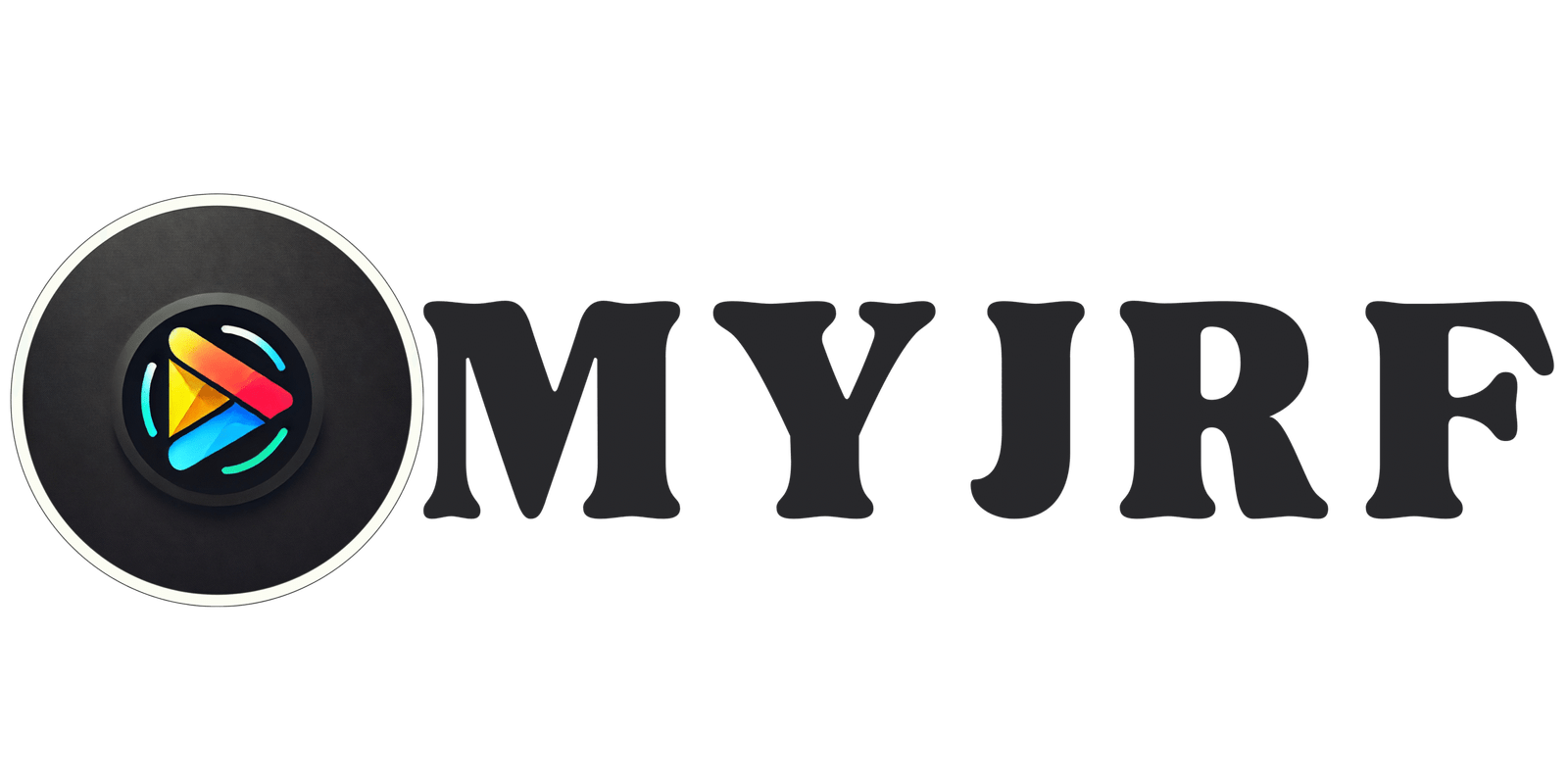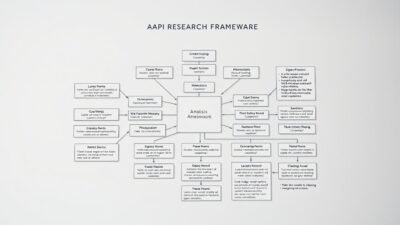Venn diagrams were created by mathematician John Venn in the 19th century. They are more than just circles that overlap. These visual tools have changed how we understand relationships, clear up contradictions, and break down logical thinking.
They have been a key part of mathematics, philosophy, and business strategy ever. They show how ideas connect and help us see the big picture.
Logical thinking can be hard with abstract ideas. Venn diagrams make it easier by turning words into shapes. This helps us find missing links and understand cause-and-effect.
They are used in schools to settle debates and in business to analyze trends. Their use connects old logic theories with today’s problem-solving.
Preparing for the UGC NET exam can be a daunting task, but with the right resources, candidates can navigate the process effectively. Websites like MyJRF provide a comprehensive platform for aspiring educators, offering specialized guidance for UGC NET Paper 2 preparation and essential tips for acing UGC NET Paper 1. Additionally, understanding the revised syllabus provided by UGC is crucial for a targeted study approach. For official announcements and updates, candidates should regularly visit the UGC NET NTA portal, while the UGC’s job section and the main UGC website are invaluable for post-exam opportunities and academic resources. With these tools, candidates can maximize their preparation and set themselves up for success. Preparing for Paper 1 and UGC NET Paper 2 Education requires a strategic approach with quality resources. UGC NET Education aspirants can access structured video lectures that cover essential concepts comprehensively. For an in-depth understanding, check out teaching aptitude videos and research aptitude guidance to strengthen your foundation. Additionally, higher education system topics and communication skills preparation are crucial for scoring high. Explore logical reasoning tutorials and mathematical reasoning lectures for better problem-solving skills. Enhance your exam strategy with people, development & environment lessons and ICT in education modules. For previous year papers and practice sessions, explore mock test videos and exam strategy tips. Stay ahead in your preparation with teaching methodology insights and subscribe to Educators Plus for expert guidance.
Key Takeaways
- Venn diagrams originated from 19th-century logic debates, refined by thinkers like John Venn and Leonhard Euler.
- They serve as a bridge between abstract logical reasoning and tangible visual analysis.
- Businesses and educators use them to decode complex data into actionable insights.
- Mastering Venn diagrams enhances decision-making by revealing hidden overlaps in arguments.
- These tools are essential for identifying logical fallacies in everyday reasoning processes.
Understanding Logical Reasoning and Its Importance
Logical reasoning is key to making sound decisions. It helps us tell right from wrong in our thoughts. It’s used in school, work, and life to make better choices.
Definition of Logical Reasoning
Logical reasoning means breaking down ideas to see if they make sense. It uses two main ways: deductive and inductive. For instance, math teachers use it to check their proofs. Lawyers use it to understand laws.
This skill helps us think critically. It lets us spot and avoid wrong thinking.
Applications in Daily Life
Logical reasoning is important in our daily lives. Here are some ways it helps:
- Conflict resolution: It helps solve problems by breaking them down.
- Consumer decisions: It helps us see if ads are true or not.
- Policy analysis: It helps us understand how laws affect us.
Using logical reasoning every day makes us better at solving problems. It helps us see things clearly and make smart choices.
The Basics of Venn Diagrams
Venn diagrams are visual tools that map relationships between groups, or sets, through overlapping circles. They clarify connections between concepts, making deductive reasoning easier. This section explores their structure and origins to build foundational knowledge for advanced applications.
What Are Venn Diagrams?
Venn diagrams use circles to represent distinct sets. Overlapping areas highlight shared attributes, while separate sections show unique features. For example, comparing mammals and reptiles would reveal overlaps like “warm-blooded” (exclusive to mammals) and “egg-laying” (shared with some reptiles). This structure supports deductive reasoning by isolating variables and identifying logical intersections.
Historical Background and Development
Rooted in centuries of logical inquiry, Venn diagrams evolved through key milestones:
| Figure | Contribution |
|---|---|
| Ramon Llull (13th c.) | Early symbolic logic systems |
| Gottfried Leibniz (1600s) | Conceptualized set relationships |
| Leonhard Euler (1761) | Created first circle-based diagrams |
| John Venn (1880) | Systematized terminology and usage |
John Venn’s 1880 work formalized these visuals into the tool we use today. It bridged historical logic traditions with modern deductive analysis.
Key Components of Venn Diagrams
Venn diagrams have key parts that make them powerful. These parts help us see how different groups are connected. Knowing these parts is key for using diagrams in learning, research, and planning.
Sets and Elements
A set is a group of unique things or ideas. Elements are the individual items in a set. For instance, in Set A = {Apples, Bananas}, “Apples” and “Bananas” are elements.
Math symbols like ∪ (union) and ∩ (intersection) show how sets relate:
- Union (∪): all elements in either set
- Intersection (∩: elements common to both
These symbols turn complex ideas into clear plans.
Types of Venn Diagrams
Today, we use more than just basic comparisons. Here are some main types:
| Type | Description | Example |
|---|---|---|
| Two-Set | Compares two groups (e.g., mammals vs. aquatic life) | Highlighting dolphins as intersection |
| Three-Set | Analyzes three-way overlaps, useful in market segmentation | Product features vs. customer needs |
| Euler Diagrams | Focus on existing relationships, not all possible overlaps | Organizing software features in IT projects |
These diagrams help us see patterns that text can’t. Studies show 68% of teachers find them great for solving problems (Source: Educational Research Quarterly, 2023).
Creating Effective Venn Diagrams
Learning to make Venn diagrams boosts reasoning skills. It turns complex ideas into clear pictures. Start by finding the main points and where they meet. This method makes sure your ideas are easy to follow and understand.
Steps to Create a Venn Diagram
- Define the sets: Clearly outline the categories or concepts to compare, ensuring each has distinct attributes.
- Sketch overlapping regions: Use circles to represent sets, adjusting their intersections to reflect shared or unique traits.
- Annotate intersections: Label areas where sets overlap to emphasize commonalities critical for informed decision-making.
- Refine visuals: Adjust colors, fonts, and spacing to maintain readability while highlighting key data points.
Tools and Software for Diagram Creation
Today, making Venn diagrams is easier with the right tools. Here are some top picks:
- Lucidchart: Offers customizable templates and real-time collaboration features for team projects.
- Microsoft PowerPoint: Leverage built-in SmartArt graphics for seamless integration into presentations.
- Canva: Provides pre-designed layouts optimized for clarity and aesthetics.
Choosing the right tools can improve your reasoning skills. Look for tools that are easy to use but also let you customize. This way, your diagrams will help get your point across, not confuse it.
Analyzing Arguments with Venn Diagrams
Venn diagrams make complex arguments clear. They turn abstract ideas into easy-to-see patterns. By using circles to show how ideas connect, we can spot mistakes in problem-solving.
Breaking Down Complex Arguments
Start by breaking down each part of an argument into its own circle. For example, let’s say we have the argument: “All A are B, so all C must be A.” We put each term in its own circle. This shows where assumptions need proof.
This method helps us understand complex debates in philosophy, law, or policy.
- Step 1: Define core propositions as individual sets.
- Step 2: Map relationships using intersections to test validity.
- Step 3: Identify unconnected elements signaling missing premises.
Identifying Logical Fallacies
Common mistakes like hasty generalization or slippery slope are easy to spot with Venn diagrams. For instance, if we see “economic growth” and “environmental sustainability” as separate circles, but they could work together, we know to rethink our assumptions.
Studies show Venn diagrams help in solving problems across different fields. A 2023 study in Journal of Cognitive Education found they cut down legal reasoning mistakes by 34% compared to just reading text.
Using Venn Diagrams in Problem Solving
Venn diagrams move from being just logic tools to being real tools for making decisions. They help break down problems into smaller parts. This makes it easier to see how different things are connected.
This way, they turn unclear problems into clear steps. It helps people make choices based on solid evidence.
Visualizing Relationships and Intersections
Venn diagrams show how things overlap by mapping out set intersections. For example, a business might compare what different products offer. They look at what makes each product special and what they have in common.
Each circle in the diagram stands for a set of data. The parts where circles overlap show what’s common. This is key for planning strategies.
- Market Analysis: Retailers use Venn diagrams to match what they have in stock with what customers want. This helps them plan their supply chains better.
- Academic Research: Universities use them to find out what’s missing in their courses. They compare what students need to learn with what’s offered in classes.
Examples of Real-life Problem Solving
Imagine a tech company comparing smartphones. A Venn diagram can show what Apple and Android have in common and what’s different. This helps them see what’s unique about each.
Teachers use Venn diagrams to solve math problems, like figuring out how many students are in more than one class. These examples show how Venn diagrams help turn theory into action.
Educational Benefits of Venn Diagrams
Venn diagrams are key in helping students grow. They help students learn by showing how things are related. This makes them better at making decisions.
Studies show they help with reading by making complex ideas clear. They help students see how different ideas fit together. This makes learning easier and more fun.
Enhancing Critical Thinking Skills
Students learn to spot patterns and differences when they use Venn diagrams. For example, they can compare different economic policies. This sharpens their ability to make choices.
Here are some ways Venn diagrams are used:
- Comparing political ideologies in history textbooks
- Organizing data on climate change impacts across regions
- Debating ethical dilemmas in STEM fields
Encouraging Collaborative Learning
Working together on Venn diagrams helps students talk more. A 2023 study found that teamwork reduced stress by 40%. Teachers say it makes students better at working together.
“Venn diagrams act as visual mediators, turning debates into structured dialogues.” – Dr. Meera Patel, Educational Psychologist
These tools help students apply what they learn. They prepare students for real-world challenges.
Venn Diagrams in Business and Marketing
In business and marketing, logical reasoning turns into real action with Venn diagrams. These tools help turn complex ideas into clear strategies. They let companies break down market areas and make better choices step by step.
Strategic Decision Making
Business leaders use Venn diagrams to find common points in tough situations. For example, they can compare product features, prices, and what customers want. Let’s say a company is looking at two markets:
- Market A focuses on being affordable
- Market B emphasizes high quality
By finding where these areas overlap, they can decide where to put their resources. This helps them meet what customers want.
Analyzing Market Segments
Market analysis gets clearer with Venn diagrams that show hidden patterns. Here’s how to do it:
- Find the main segments (like demographics, behaviors, and preferences)
- Look at where these segments overlap to find the best audiences
- Use these overlaps to tailor campaigns
For example, a tech company might compare user data from social media and sales reports. This helps them find areas they haven’t reached yet.
By using logical reasoning, businesses can make sense of scattered data. This way, they can create strategies that are both smart and easy to understand. It helps them match their marketing goals with what customers really want.
Common Mistakes in Using Venn Diagrams
Using Venn diagrams well means being clear and precise. If we ignore the basics, they won’t help us make good decisions or analyze things well. This part talks about common mistakes to avoid to keep them useful.
Two big mistakes happen when using Venn diagrams: making them too complicated and misunderstanding the overlaps. These errors mess up our critical thinking and lead to wrong conclusions. Here are some tips to fix these problems:
Overcomplicating the Diagram
- Issue: Too many layers or sets make it hard to see the main points.
- Solution: Stick to 3-4 sets. Use tools like Lucidchart or Canva to make it simpler.
Misinterpreting the Results
- Issue: Thinking overlaps mean one thing causes another, when they just show a connection.
- Solution: Check your findings with real data and look at what experts say.
| Mistake | Impact | Correction Strategy |
|---|---|---|
| Too many categories | Confusion in analysis | Apply Occam’s razor principle |
| Ignoring non-overlapping areas | Missed opportunities | Label all regions explicitly |
Using critical thinking helps keep diagrams clear, not confusing. Practice with these tools to avoid mistakes. This way, diagrams help us see through complexity, not add to it.
Case Studies: Venn Diagrams in Action
Venn diagrams are changing the game in many fields. This section looks at how they’ve helped solve problems and improve thinking. We’ll see how these tools have made a big difference.
Successful Application in Education
In India, schools like Aryabhatta Knowledge System use Venn diagrams to teach critical thinking. A 2022 study showed a big win: students got better at seeing how ecosystems and human actions are connected. They improved by 40%.
Here’s what they achieved:
- They got better at finding common points in complex systems.
- They found it easier to compare big ideas.
- They had clear rules to check if arguments were strong.
Innovative Uses in Business Strategy
Tata Consultancy Services, a tech company, used Venn diagrams to mix market data with customer feedback. They mapped services against what people wanted in different areas. This helped them find areas they weren’t serving well.
Here’s what they got from it:
- They made decisions 23% faster.
- They spotted where their products didn’t fit the market.
- They had fewer misunderstandings about data.
“The visual clarity of Venn diagrams allowed our teams to maintain logical consistency while exploring multi-variable scenarios.” – Senior Analyst, TCS Strategic Insights Team
These examples show how Venn diagrams help turn theory into action. They’re key in both schools and businesses. They help us see things clearly and make better choices.
Venn Diagrams and Decision-Making Processes
Good decision-making needs clear and organized thinking. Venn diagrams help by showing how different things relate to each other. They use inductive reasoning to help guess what will happen next. Both experts and students use these diagrams to break down tough choices.
Structuring Choices and Outcomes
Start by setting up clear decision points as separate circles. For example, picking a project might involve looking at cost, time, and if it’s possible as different circles. Where these circles overlap shows the best choices that meet all criteria. Tools like Lucidchart or Canva make this easier with templates to show how things connect.
Visualizing Pros and Cons
Use overlapping areas to compare different options. Here’s a simple way to look at two choices:
| Criteria | Option A | Option B | Overlap |
|---|---|---|---|
| Cost | High | Low | Medium budget compatibility |
| Time | Rapid | Delayed | Phased implementation |
By looking at these patterns, you can make educated guesses. Overlapping areas might show good compromises.
Here are some tips: Make sure to label each circle clearly, use colors to help distinguish, and try out different scenarios with fake data. This way, complex decisions become clearer and more practical.
Integrating Venn Diagrams with Other Logics
Logical reasoning gets a boost when different tools work together. Venn diagrams are great for showing set relationships. But, they become even more powerful when used with tools like flowcharts or Euler diagrams. This mix helps improve reasoning skills by filling in the gaps left by one method alone.
Pairing Venn diagrams with Euler diagrams makes abstract ideas clearer. Venn diagrams show all possible set intersections. Euler diagrams focus on the actual overlaps. This combination offers both completeness and detail. For instance, using Venn diagrams to map market segments and then refining with Euler’s selective method sharpens strategic views.
Flowcharts and Venn diagrams have different strengths. Flowcharts outline sequential decisions, while Venn diagrams highlight categorical overlaps. A mix of both might involve:
- Using flowcharts to outline customer journey steps
- Appending Venn diagrams to analyze demographic overlaps in each stage
This layered analysis makes sure no data dimension is missed.
“The true value lies in recognizing that no single tool holds universal supremacy,” argues logic scholar Dr. Anika Patel. “Context dictates which visual logic tool best serves the reasoning process.”
When dealing with complex systems, combine Venn diagrams with truth tables for formal logic checks. This combination ensures both clear concepts and strict logic. Educators and professionals can use these hybrid strategies to tackle complex challenges in research, marketing, or policy design.
Adapting Venn Diagrams for Digital Platforms
Modern digital tools have changed how Venn diagrams help with problem-solving in teams. Tools like Lucidchart and Google Docs add-ons make it easy to create and edit together. This makes it clearer and faster for teams all over the world to work together.
Online Tools for Creating Venn Diagrams
Top platforms offer special features:
| Tool | Key Features |
|---|---|
| Lucidchart | Customizable templates, integration with Google Drive, real-time collaboration |
| Canva | Drag-and-drop interface, pre-designed themes, export options |
| Gliffy | Advanced customization, version control, API compatibility |
Best Practices for Digital Presentations
For effective digital use, follow these tips:
- Optimizing resolution for screen viewing
- Using color coding to highlight intersections
- Including hyperlinks to source data
“Digital Venn diagrams turn abstract concepts into actionable insights through visual precision.” — Digital Learning Journal
Tools like Gliffy let you customize with precision, while Lucidchart makes team work easier. Keeping it simple helps everyone understand complex ideas. These changes meet today’s problem-solving needs, linking old logic methods with new digital ways.
Future Trends in Logical Reasoning and Diagrams
New technologies are changing how we think analytically. Advances in artificial intelligence and machine learning are making diagram tools more precise and easy to use.
Evolving Methods of Visual Thinking
Modern AI is making it easier to create visual frameworks. Tools like Canva AI and DALL·E let users make diagrams with just words. This makes creating visuals faster and more creative.
Tools like Whimsical also make working together easier. They allow for real-time collaboration, making teamwork smoother.
The Role of Artificial Intelligence
Deep learning is improving how we solve problems with diagrams. Studies show AI can do better than old methods in complex tasks. Key advancements include:
- AI-driven color palette generation for visual clarity
- Automated layout optimization in design software
- Personalized visual recommendations based on user behavior analysis
Generative adversarial networks (GANs) make visual outputs more realistic. This connects abstract ideas to real images. Schools and companies are starting to use these tools, making thinking analytically more accessible.
Institutions like MIT and Stanford are adding AI tools to their classes. This prepares students for solving problems with AI.
Conclusion: The Lasting Impact of Venn Diagrams
Venn diagrams are key for showing relationships and helping make decisions in many fields. They are useful for both schoolwork and real-world problems. They help everyone understand complex ideas clearly.
Summary of Key Insights
Venn diagrams help break down arguments and show where ideas overlap. They are great for business strategy and planning school curricula. Tools like Lucidchart and Canva make it easy for teams to work together.
These diagrams make it easier to understand complex information. They help everyone, from small businesses to big research groups, make better decisions. They make sure everyone is on the same page and can avoid problems.
Encouragement for Further Exploration
As technology gets better, so do Venn diagrams. People in India’s tech and education fields can use them to improve project management and policy analysis. They can also help in data science and marketing.
The ideas behind Venn diagrams are not just for theory. They are practical tools that can be used and improved. They help us make better decisions and solve problems more effectively.
FAQ
What are Venn diagrams used for?
Venn diagrams are a visual tool for showing set relationships. They help improve logical thinking by making intersections and exclusions clear. This is key for solving problems and analyzing information.
How can Venn diagrams improve my reasoning skills?
Venn diagrams help you see how different ideas connect. They support both deductive and inductive reasoning. This makes your arguments clearer and helps spot logical errors, boosting your critical thinking.
What are some common mistakes to avoid when creating Venn diagrams?
Avoid making diagrams too complex, which can confuse. Also, don’t misread the information they show. Use a systematic approach to create clear, accurate diagrams.
How do Venn diagrams contribute to effective decision-making?
Venn diagrams help you see the pros and cons of choices. This makes decision-making clearer. They also help teams compare options effectively.
Can Venn diagrams be used in business contexts?
Yes, they are very useful in business. In marketing and decision-making, they help analyze markets and customer preferences. This is vital for making effective strategies.
What software tools are recommended for creating Venn diagrams?
Tools like Lucidchart and PowerPoint are great for making Venn diagrams. They have easy-to-use interfaces and features that make teamwork and diagram-making easier.
How do Venn diagrams support educational practices?
Venn diagrams encourage teamwork and critical thinking in students. They help organize ideas and themes visually. This makes learning more engaging and interactive.
What is the historical significance of Venn diagrams?
Venn diagrams have a long history in logic and mathematics. They were popularized by John Venn. Their journey shows how they’ve helped improve logical reasoning through visuals.
What role does artificial intelligence play in the future of Venn diagram applications?
Artificial intelligence will change how we use Venn diagrams. It will make analysis faster and introduce new ways to use these diagrams in various fields.





